Compact Charm: The Best Small Flowering Trees for your Garden Oasis
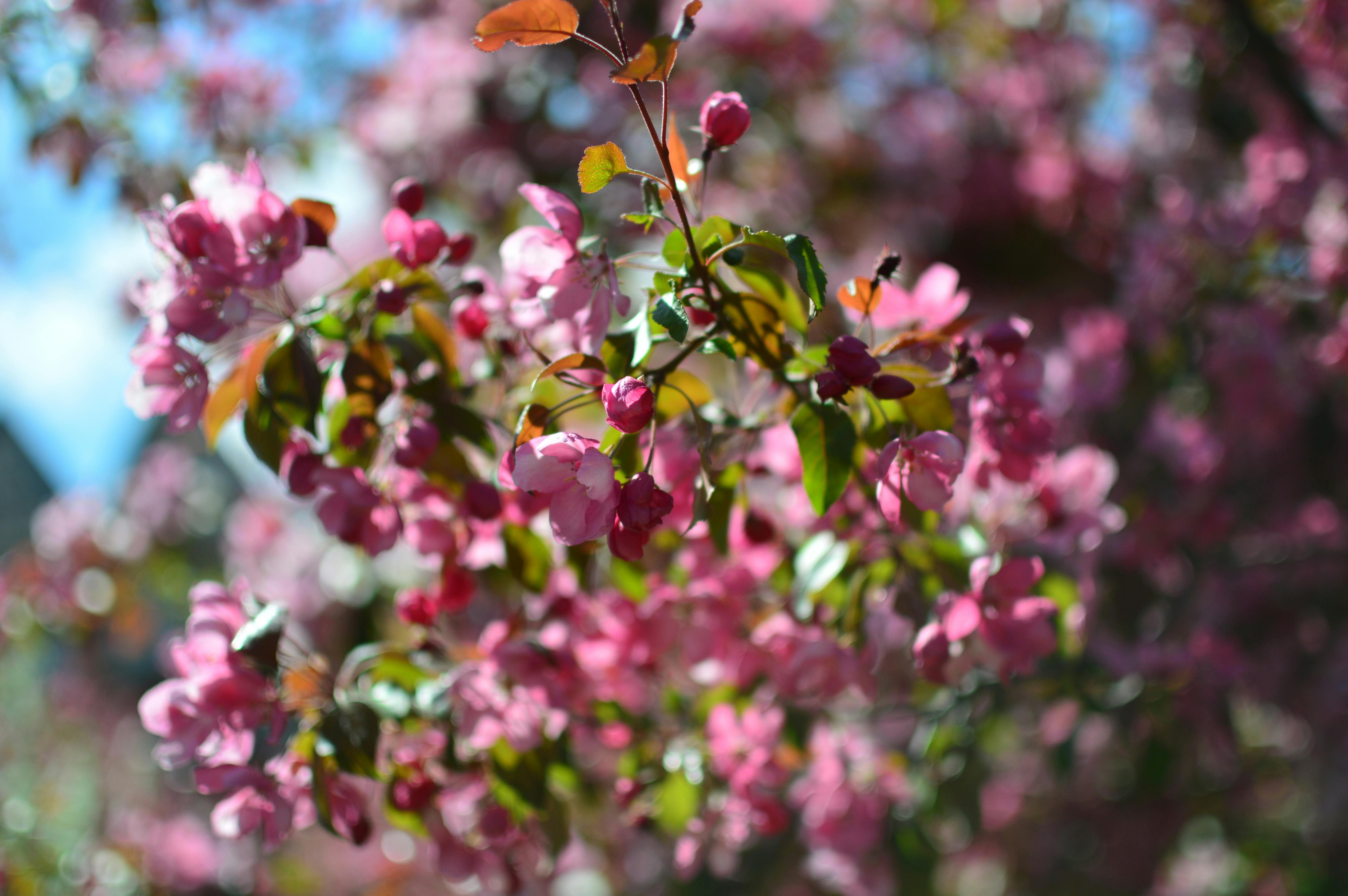
One of the main principles of garden design is selecting the right plant for the right spot. Small flowering trees are an ideal choice for small yards or beds where large growing trees could cause problems down the road. They are great for tight spaces, small yards, or where there is room for one special accent. Choosing the right tree can create a beautiful statement for years to come.
When deciding which small flowering tree to select for your garden, take into account the maximum size tree the space will hold, whether the area is in sun or shade, and desired bloom color and bloom time. Do you want the tree to bloom during the time you’re enjoying your backyard or would you prefer it for your front yard? Here are some of our favorite choices:
Flowering Cherry
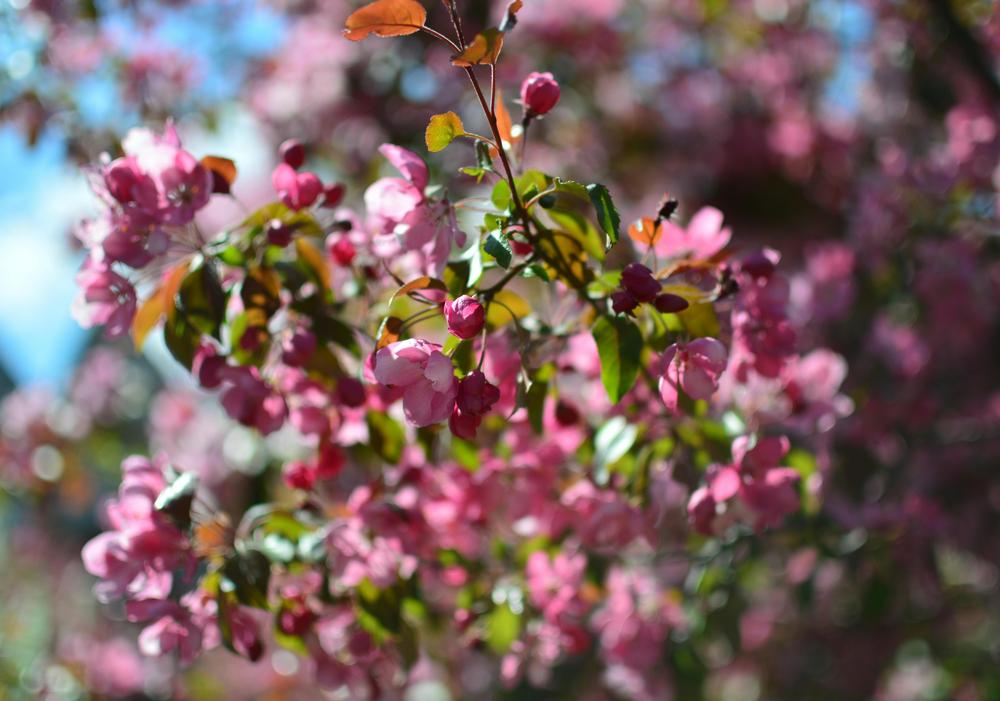
Among the earliest spring bloomers are the flowering cherries. Popular selections include the varieties seen at the Tidal Basin, Yoshino (white) and Okame (pink). Slightly later we see Kwanzan cherries with their double pink blooms. If space is at a premium, consider a weeping cherry. It has a dramatic, though more compact, shape compared to most of the other flowering cherries. Flowering cherries prefer a sunny exposure. They do not like to sit in a wet spot.
Deciduous Magnolia
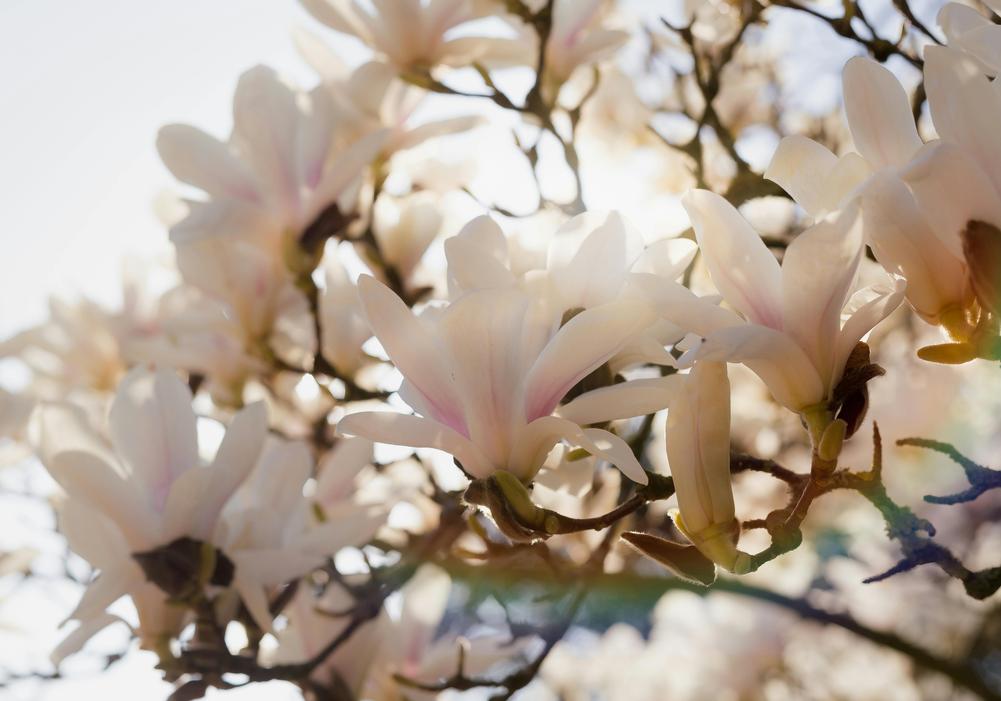
Blooming around the same time as the flowering cherries, deciduous magnolias provide a dramatic statement. The large blooms come out before the leaves. They can be pink, red, white or even yellow. In addition to their beautiful color, the blooms have a lovely scent. Deciduous magnolias usually mature to 20’ tall, 15’ wide or smaller. The earliest to bloom is Star Magnolia with its profuse white blossoms. Varieties that we especially like are Jane (reddish pink), Susan (fuchsia pink), and Butterflies (the best yellow).
Deciduous magnolias thrive in full sun. They can take some morning shade, but want the strong afternoon sun.
Eastern Redbud
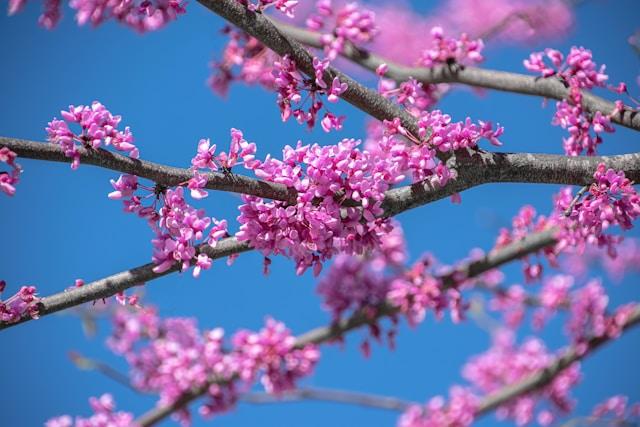
These Virginia native trees begin blooming just as cherries and magnolias are finished in early April. They feature profuse, tiny rosy-red blooms all along the branches before the leaves appear. The original species grows to 25-30’ tall and wide.
Redbud cultivars can vary by size, foliage color, and bloom color. There is even a white-blooming “redbud.”
Ruby Falls is a favorite cultivar for small spaces. It features graceful, weeping branches and usually is confined to 5-6’ in width. After the bloom is finished, lush burgundy foliage takes over, providing color interest through the summer.
Redbuds found in the wild usually grow along the edge of forests. These beauties prefer morning sun or light, dappled shade. They can be grown in the sun with adequate water and food, but are happier in a shadier spot..
Dogwood (Cornus florida)
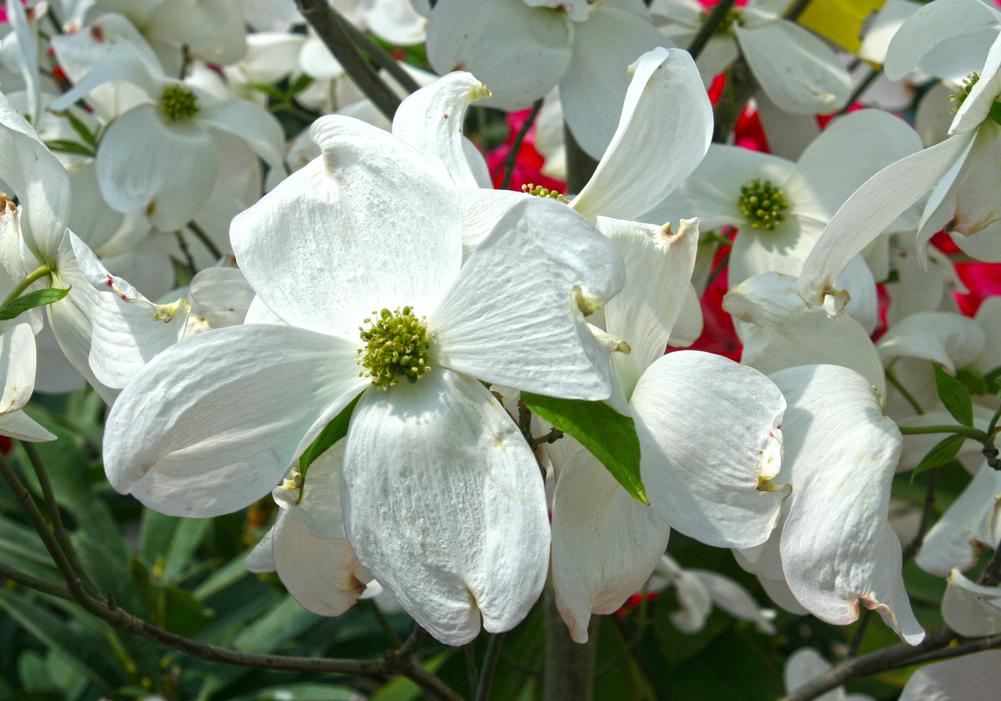
Following redbuds, we see Virginia’s state tree and flower. Dogwoods bloom in mid to late April, around the same time as early azaleas. The flowers appear before the leaves. Dogwoods prefer light, dappled sun in our area, as opposed to full afternoon sun. Select a cultivar with the bloom color and mature size that you desire. These Virginia natives have gorgeous bronze-red fall color, followed by profuse red berries that are prized by our local birds.
The very best white dogwood is a cultivar called Cloud Nine. It’s a bit more compact than standard white dogwoods, maturing to 12-15’ tall, and 8-10’ wide. The thing that sets it apart is its heavy bloom set–about twice that of a standard white dogwood. It also has increased disease resistance.
Standard pink and red dogwoods grow to 12-15’ tall and wide in ten years. Cultivars that we like include Cherokee Brave and Cherokee Chief. They feature larger, more profuse blooms than the straight pink dogwood cultivar.
Kousa Dogwood
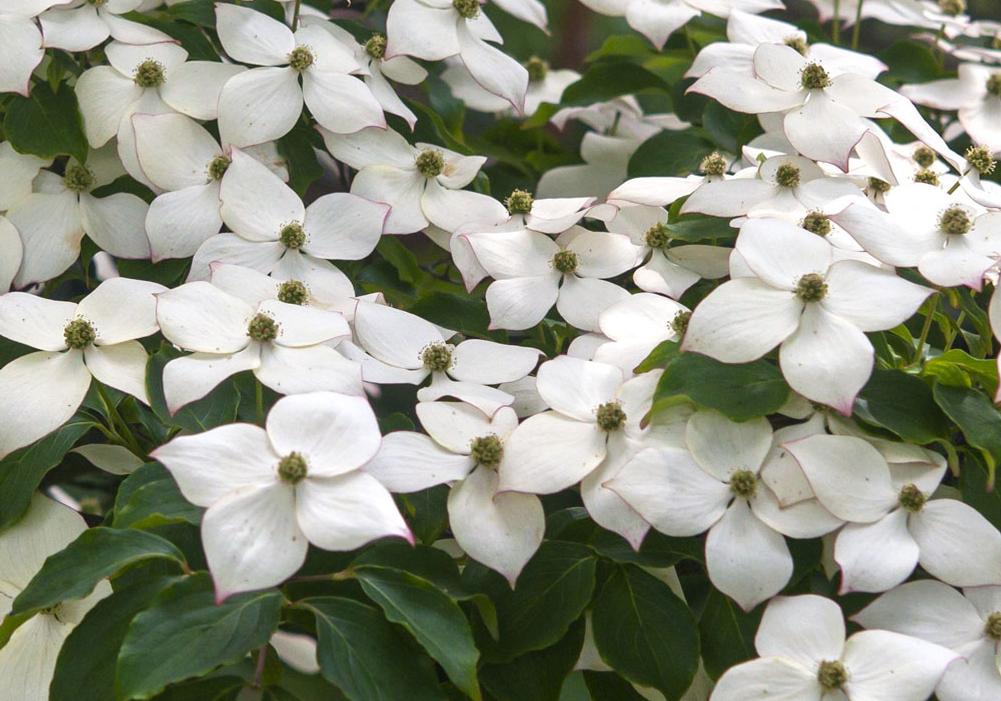
The Kousa, or Korean, dogwoods bloom a few weeks after the native dogwoods. They feature blooms that appear after the foliage has emerged. They are typically more resistant to disease then the standard dogwoods (cornus florida). Their blooms are long-lived and showy. Kousas reveal a beautiful, mottled bark that becomes more evident as the trees mature, providing winter interest.
There is an outstanding pink/red variety called Scarlet Fire. On the larger size for a “small tree,” it matures to 25’ tall, 20’ wide. It has striking dark pink to red blooms. Its blooms emerge a soft pink and gradually deepen to a light red over the period of 4-6 weeks.
Another favorite cultivar is Stellar Pink dogwood. It features profuse, large medium pink blooms beginning in late April and is also disease resistant and resistant to dogwood borer.
Japanese Snowbell (Styrax japonica)
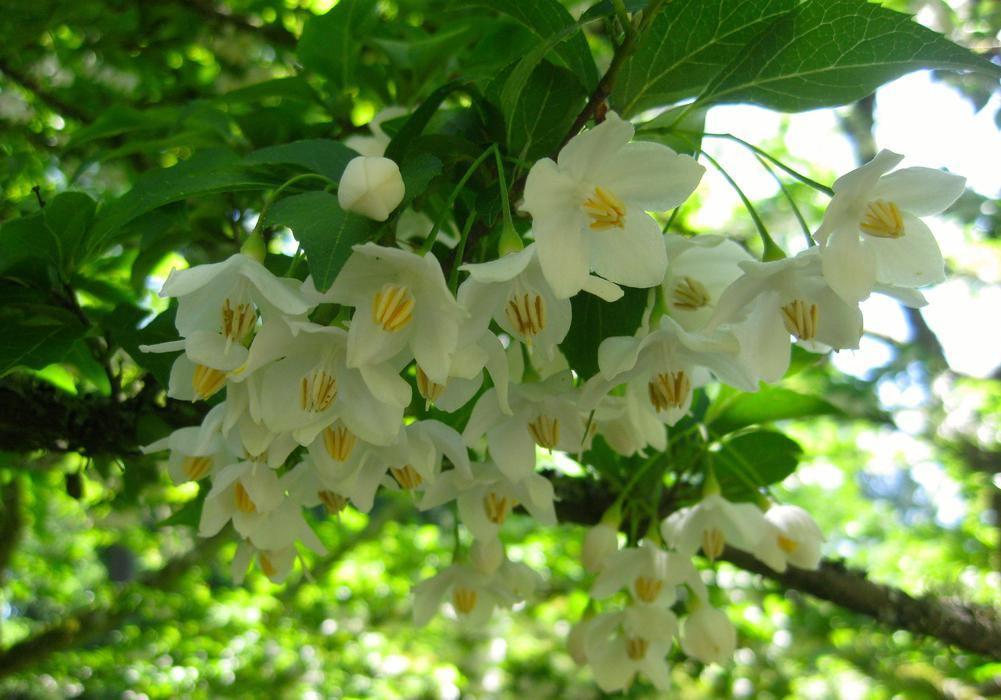
This lovely tree features bell-shaped, fragrant, pendulous blooms in late spring to early summer. It is a slow grower to 20’ tall, making it a great patio tree. The flowers of the straight species are white, hence the name Japanese Snowbell. The blooms are followed by white fruit in late summer to fall.
There are a couple of special cultivars worth mentioning. Pink Chimes features delicate pink flowers. Carillon is a weeping form, making it ideal for placement on walls or hillsides so that the weeping habit and delicate white blooms can be admired and enjoyed.
Japanese Snowbell trees prefer morning sun and light, dappled shade in the afternoon. They do not like hot afternoon sun. They make great understory trees beneath mature shade trees. These trees need moist, well-drained soil with plenty of organic material incorporated at planting.
Crape Myrtle
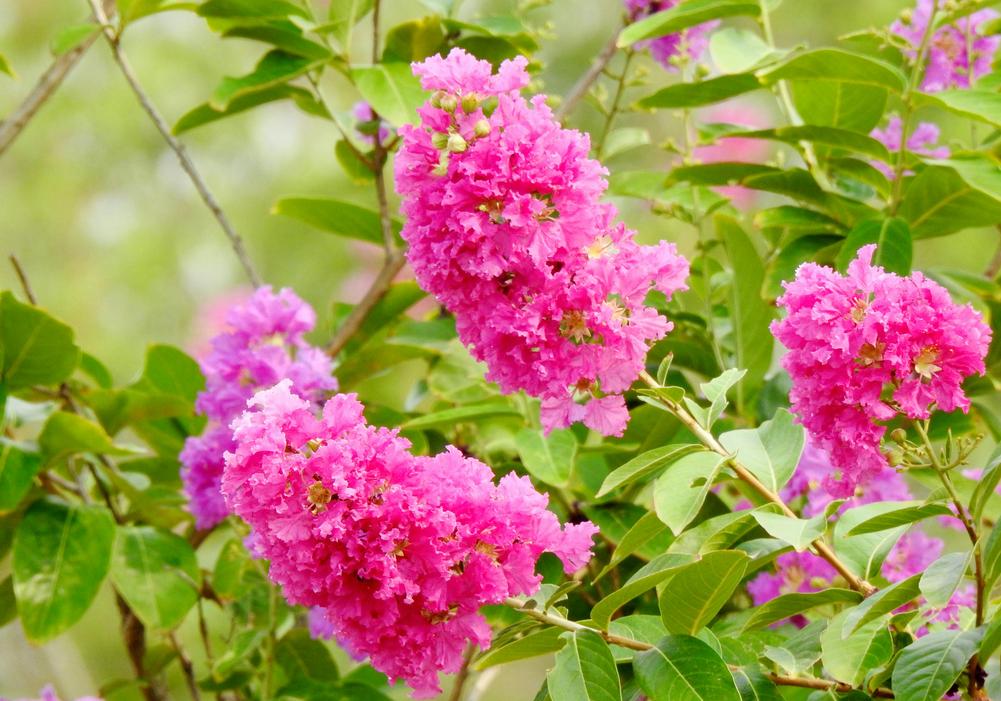
The bright, vivid colors and long blooming times make the crape myrtle the perfect flowering tree for summer. While some varieties do grow very large, there are other cultivars that maintain a compact habit and are most worthy of a small garden spot.
Crape myrtles love full sun, heat, and plenty of water that drains well. If placed in a less than sunny location, they will not bloom profusely. If desired, they can be pruned in late winter or early spring.
A favorite compact variety is Tonto. It features red blooms in summer, maroon foliage, and grows to 8-12 feet tall. Another bonus, common with most crape myrtles, is its attractive, peeling, cinnamon-colored bark, which provides added interest in winter.
Siren Red has sizzling red blooms. Its foliage emerges red, then turns dark green. It reaches 6-10’ tall and wide.
Catawba, with its purple blooms, is another favorite. It reaches 10-15 feet tall, and 6-10 feet wide. It is ideal as a patio focal point or an entry tree.
How Should I Care for Small Flowering Trees?
While these trees have many different attributes, then have much in common. When planting, it is important to enrich the garden soil (probably clay) with organic material such as Superfines mulch or Clay Breaker. If the tree is balled and burlapped, do NOT remove the burlap or wire cage. Plant a little higher than the surrounding ground. Be sure to apply 3-4” of good mulch, such as double shredded hardwood bark.
Also extremely important is to feed your trees when you plant them, and at least once a year thereafter.. Use a slow-release granular food such as Agriform, Anderson’s or Start and Grow. Do not use liquid foods–they are too weak and will have no impact on trees. Also do not use 10-10-10. It is full of salts and releases all of its food at once, instead of gradually throughout the year. Place the food near the trunk without touching it.
The last key to success with small trees is water. Water thoroughly and deeply when planting, then regularly after that. Once the tree is established, after one complete growing season, water during hot, dry periods, or when you see the foliage wilting. Do not count on sprinklers or irrigation systems to provide the amount of water needed. Hand-water new plantings, or those showing stress, by laying the hose by the trunk and letting the water run slowly for about 20 minutes. The goal is to soak the entire root ball, not just the top couple of inches.
Are you looking for more information before planting a flowering tree? Please come by Betty’s for free planting guides for trees or for general plant care.
-
12507 Route 29, VA 22030